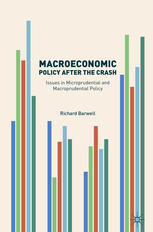

Most ebook files are in PDF format, so you can easily read them using various software such as Foxit Reader or directly on the Google Chrome browser.
Some ebook files are released by publishers in other formats such as .awz, .mobi, .epub, .fb2, etc. You may need to install specific software to read these formats on mobile/PC, such as Calibre.
Please read the tutorial at this link: https://ebookbell.com/faq
We offer FREE conversion to the popular formats you request; however, this may take some time. Therefore, right after payment, please email us, and we will try to provide the service as quickly as possible.
For some exceptional file formats or broken links (if any), please refrain from opening any disputes. Instead, email us first, and we will try to assist within a maximum of 6 hours.
EbookBell Team

4.0
46 reviewsThis book reviews the key policy debates during the post-crash era, describing the issues that policymakers grappled with, the decisions that they took and the details of the policy instruments that were created. It focuses specifically on the policy regimes at the epicentre of the crisis: micro- and macro-prudential policy with chapters exploring the revolution in the conduct of macroeconomic policy in the period since the financial crisis. The author shows that throughout this period policymakers have had to balance two conflicting objectives – to repair balance sheets in the banking and public sectors whilst simultaneously trying to catalyse an economic recovery – and that has required them to innovate new tools and even new policy regimes in response. This book goes behind the jargon and explains what exactly policymakers at the Bank of England, the Treasury and beyond did and why, from QE to austerity to Basel III.